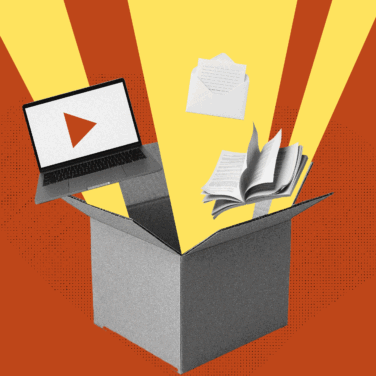“Your ability to act as a strategic partner to the business is the ultimate indication of your HR team’s success.” - Alex Link, Lead Director of L&D, CVS Health
The role of human resources has evolved and expanded so that HR is a strategic partner of the business expected to provide demonstrable contributions to business success.
While no two organizations are the same, we’ve spoken to experts to create a list of HR best practices for HR departments that truly want to support the business.
Many articles on this subject merely state the obvious about ‘hiring the right people’, ‘developing a smooth onboarding process’, or ‘creating a great culture’.
While important, I’m going to assume you’re already aware of the basics and go a bit deeper.
11 HR Best Practices
Implementing strategic talent management allows HR teams to develop practices that support employee growth and organizational success. Here are 11 HR best practices I recommend following:
1. Understand the business
“A great HR leader is curious about the business and strategy, not just the people.” - Doug Dennerline, CEO, Betterworks
It’s difficult to effectively support something that you don’t know anything about. That’s why the number one best practice for HR professionals is to seek to understand the business and how it works.
This means understanding the business model and strategy, the wider market, what the organizational objectives are, and the work your colleagues do.
Some ways that HR professionals can learn about the wider business include:
- Build it into your individual development plan (IDP). Develop an IDP that includes mechanisms to learn the business (e.g. courses or new projects/stretch assignments that will provide exposure to new business areas).
- Listening to earnings calls. If your organization is publicly traded, earnings calls provide a wealth of information not just to the investor community but to anyone trying to gain a deep understanding of the business, its strategy, and financial performance.
- Build formal relationships. Prioritize the leaders you have access to across the business and take advantage of your time with them. Where appropriate to your role/relationship, schedule regular 1:1s and show an interest in learning about them, their teams, and their work. This is your opportunity to build a trusted relationship, act in a strategic consultative way, and help enable the business strategy.
- Tap into your internal network. Informal learning through your network is one of the best (and psychologically safest) ways to learn. Ask colleagues in your internal network to join you for coffee or lunch and go prepared with questions to learn more about the work they do in their area.
- Surveys/interviews/focus groups/listening sessions with your employees and leaders. Tools like employee surveys or a series of listening sessions can be valuable for learning more about the business and your colleagues.
- Attend strategy meetings. Sitting in on (and eventually contributing to) business strategy sessions is a great way to see strategic planning in action, learn about your business strategy sessions, and gain an active seat at the table to contribute over time.
2. Be data-driven
“The complexity of today's operating environment demands new types of data to inform strategic discussions. This new data goes far beyond typical workforce analytics and even encompasses insights on talent risks and opportunities derived from large bodies of unstructured data.” - Cydney Roach, Global Chair of Employee Experience, Edelman
The shift towards HR being data-driven marks a significant evolution in how organizations manage and optimize their workforce.
This approach not only enhances decision-making but also helps align HR strategies with business outcomes.
So, how can HR teams become more data-driven?
- Establish HR metrics with clear instructions for how they’re calculated and measured
- Avoid ‘boiling the ocean’ by creating HR KPIs that demonstrate value to the business
- Use tools such as your HRIS to collect employee data for workforce planning
- Use HR analytics software to analyze your workforce data and uncover actionable insights
- Take HR analytics courses to gain skills and confidence using data.
3. Listen to employees
“The way business leaders obsess over users is the same level of interest HR must have for their employees. Understand their needs, their pain points, what challenges they face, and what skills they are seeking.” - Donna Scarola, Chief People, Purpose & Culture Officer, Parcl
Part of HR’s role is helping to architect the employee experience to aid in recruitment, retention, performance management, and engagement.
Like product teams listen to customers and gather feedback, employee listening is crucial to creating a great employee experience and building a strong employer brand.
The feedback gained can be used to create and test new programs and initiatives and create a successful and engaging workplace culture.
Some effective employee listening strategies, methods, and best practices include:
- Multiple listening channels for continuous feedback: Effective employee listening requires diverse methods like annual and pulse surveys, 1:1 meetings, focus groups, town halls, stay interviews, and exit interviews.
- Shared responsibility for capturing feedback: Listening is a collective responsibility and shouldn’t be solely owned by HR or management. Instead, the entire company takes responsibility with senior leaders setting the “listening” tone, HR driving and coaching for success, managers nurturing trust and engagement, and employees feeling empowered to contribute fully to the process.
- Action from listening data: If team members don't see how their feedback is informing the company’s actions, they’re less likely to continue sharing.
- Encouraging employees to speak up: Getting employees to speak up can be a challenge for many organizations. Communicating the “why” behind employee listening is a great start as people are much more likely to do something when they understand how it can benefit them. Another aspect is creating psychological safety so people feel confident that they can speak up and contribute ideas without being humiliated.
4. Treat people ops like a product
“People operations is the (largely unseen) product your team buys into during recruitment, and then continues to subscribe to until they hand in their resignation” - Jessica Zwaan, COO, Talentful
I mentioned above about using employee listening in the same way that product teams do. This can be taken a step further to treat people operations like a product.
This means treating the employee experience as a product that people buy into when they join the company.
It’s the job of HR/people ops teams to make this product the best it can be. Employee listening is a key part of this, but here are some more methods and best practices to help achieve this:
- Maximize impact on the mission: If your company’s mission is “Provide Sustainable Energy to Everyone Globally” then it’s the people operations team’s role to do everything they can to enable people to achieve that mission.
- Accomplish everything through others: Great people ops—from performance and growth conversations, to solid 1:1s, to a world-class team of colleagues delivered by an effective recruitment machine—is actually done by the people operating that machinery. Machinery should rarely be used by the hands of people ops folk.
- Feedback loops: If you think of your team as customers of your employee experience, one of the most important principles of product management is developing clear and open feedback loops.
- Design thinking: To effectively run your people ops function like a product function, it’s necessary to incorporate design thinking and agile HR practices. This may take some training, or just sitting in on your product, design, and engineering team’s retros, standups, and road-mapping sessions.
- Tools: To run a product-thinking people team you will need some tools for planning, feedback, tracking, and testing. Some of these are more expensive but quite effective (Peakon) and some of them are cheap but practical for scaling businesses (Google Forms).
5. Make time for strategy by removing transactional tasks
“A major barrier to becoming a strategic HR partner is time. There are only so many hours in a day and you need to be very intentional in how you spend them.” - Alex Link
The life of an HR professional is a busy one. It’s easy to get bogged down in the transactional tasks and not have any time for more important strategic thinking.
There are two ways to combat this:
- HR governance model: What can be changed about your HR operating model to free up time to be more strategic?
- Self-governance: How can you prioritize your work differently to free up time to focus on more strategic concerns?
For example, sometimes payroll is handled by HR amongst their other monthly duties—but could this task be outsourced to another department or external service?
6. Don’t neglect your personal development
“HR leaders should rotate through the business and business leaders should rotate through HR. Ultimately, we want well-rounded leaders who have a deep and broad understanding of the business, the culture, and how to best develop our people.” - Michael Knierim, KWM Consulting
We work hard to create learning and development strategies to help others, but it’s important to remember not to neglect your own learning and development.
HR books, podcasts, courses, and conferences are helpful, but experiential learning is where the rubber meets the road.
The 70-20-10 model of learning posits that we should spend 70% of our development time on experiential learning.
This means taking on new projects and stretch assignments that will provide exposure to new business areas and help you develop your skills.
It’s also important to find a strong mentor and/or coach to help you find opportunities and guide you in the right direction.
7. Change the business’s perception of HR
“Most leaders don’t see how to employ HR as a strategic pillar of the business. Yes, we can do office snacks, yes, we can help throw fun events, but “culture ambassadors” is a piece of what we do and not the whole picture.” - Alana Fallis, Director of People Ops, Quantum Metric
Unfortunately, there’s still the misconception that HR is only there to “hire and fire” people and isn’t a strategic value add to the organization's long-term success.
If you want to operate as a strategic partner and work on interesting projects, it might be you have to change the business’s perception of what HR is.
Following the best practices above wil help but it’s important that you communicate with your stakeholder and let them know what you’re trying to do, ask them to help define what it is they need from you, and make sure you are realigning your HR approach around their wants and needs.
It’s not about being popular either, it’s about acting as a consultant to identify how you can help the business and then delivering on those KPIs!
8. Be technology agonistic
There’s a lot of hype around new HR software and tools that can do it all. But don’t get pulled in by all the fancy bells and whistles.
Our advice is to be open to new technologies but take marketing claims with a pinch of salt and be judicious about what you actually need. Show your research when you make your business case for HR software and outline the impact you believe it will have.
For further guidance, read our guide to HR digital transformation.
9. Document everything
It’s wise to set up good practices around documentation. This is particularly useful in remote and hybrid organizations!
This includes documenting all processes in a way that’s easily accessed and searchable. Each subject matter expert can document their processes over time and share them with team members.
Standardizing HR processes such as leave management, HR compliance, accommodations, hiring, and onboarding helps alleviate risk and makes it easier to update and audit them as time goes by.
In addition to processes and policies, document decision-making and everything concerning a workplace investigation or dispute.
10. Be present, communicate often
“Intentional communication from an HR perspective is responsible for maintaining a positive work culture, the attraction and retention of talent, resolving issues, serving legal requirements, and supporting employee growth and well-being. I’d go as far as saying it’s the foundation of an HR function which ensures that everyone is on the same page.” — Raakhi Vadera, Senior People Partner UK/US, YOOBIC
It’s a sad fact of the job that a lot of what HR professionals do goes unnoticed and unappreciated by most of their colleagues.
A lot what they do is confidential after all, and impartiality is crucial when dealing with employee relations matters.
But, just because much of the work demands discretion, that doesn’t mean HR teams should hide away in their offices.
There’s much to be gained from being an open, communicative, and positive presence within the organization. It will help you learn about business and build trust with your colleagues.
Of course, there is a fine line to tread here between being friendly and being friends. It’s difficult to fire someone you’re close to, and you don’t want to be perceived as having favorites.
Part of good communication is making information easily accessible to those who need it, be it on an intranet or similar. This will help reduce the amount of questions the team is asked.
For a deeper dive into how to communicate effectively as an HR function, check out our article on HR communication.
11. Ask for help
HR folks wear a lot of hats, so asking for help isn’t a weakness; it’s a smart way to make sure you’re making the best decisions for your company and employees.
For example, when dealing with complex legal and compliance concerns, it might be better to consult an employment lawyer or legal expert.
Some guidance around who you can potentially turn to for help:
- Employment lawyers: When compliance and legal risks are on the line.
- HR Consultants: For strategic planning, restructuring, and employee relations.
- Employer of Record (EOR) Services: If you’re hiring globally
- HR peers and networks: HR communities and industry events for shared experiences and best practices.
Reality Check: What Human Resource Management Best Practices Can’t Guarantee
The above HR best practices can do a lot to enhance the department’s efficacy, but they can’t guarantee the following:
- 100% employee satisfaction and retention: Even with strong engagement strategies, some employees will leave due to personal reasons, career changes, or external opportunities; it’s healthy!
- Perfect hiring decisions: Strategic workforce planning and structured hiring reduces bias and improves selection, but they can’t totally eliminate the risk of a poor fit or unforeseen performance issues.
- 100% conflict-free work environment: HR can mediate disputes and foster an open, collaborative culture, but workplace conflicts may still arise due to personality clashes, stress, or miscommunication.
- Equal success for all employees: Training and development programs provide opportunities, but success depends on individual effort, adaptability, and external factors.
- Full compliance without active oversight: Effective HR policies help maintain compliance, but laws change, and businesses must continuously monitor regulations to avoid legal risks.
- Immediate cultural alignment: Even with strong onboarding and engagement efforts, integrating new hires into company culture takes time and isn’t always guaranteed.
- Absolute prevention of bias or discrimination: Diversity and inclusion policies reduce bias, but unconscious bias and systemic challenges still require ongoing effort to address.
- Guaranteed business success: HR best practices support business goals, but market conditions, competition, and external factors also impact a company’s success.
Subscribe To The People Managing People Newsletter
For further insights on developing a world-class HR function, subscribe to our weekly newsletter for HR and business leaders. You’ll receive all our latest content to help you grow in your career and make greater impact in your org.



